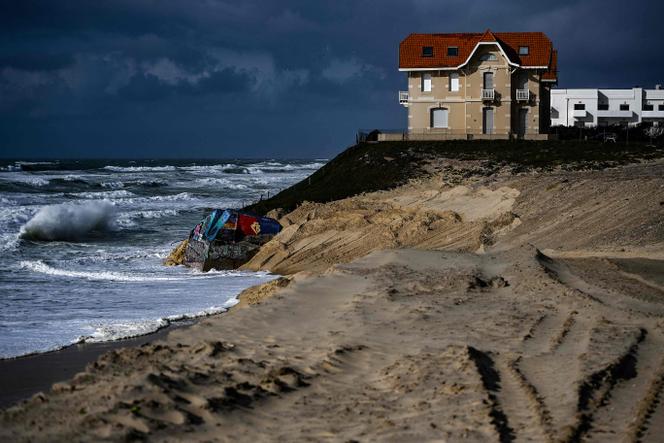


From cliffs to sandy beaches, the sea is gaining ground in France. But where, and at what pace? To answer these questions, the French Centre for Studies and Expertise on Risks, the Environment, Mobility and Urban Planning (CEREMA), a public institution that describes itself as tracking the evolution of "the climate and territories of tomorrow," has put together a forecast for three dates in the future: 2028, 2050 and 2100. The results of this project, which have not yet been officially made public, enable an estimation of the number of buildings that will be the first to be affected by the coasts' inevitable retreat. Coastal erosion has here been separated from the probability of marine submersion.
As the Court of Accounts pointed out in its report on France's adaptation to climate change, published on March 12, mainland France has already lost almost 3,000 hectares of its coastline in the 50 years between 1960 and 2010. The auditors therefore recommended a diagnosis of all French territories taking into account the foreseeable rise in sea level. CEREMA's work has come at just the right time.
By 2028, a thousand buildings are likely to have been affected by coastal erosion. These include 528 dwellings in 300 buildings, half of which are second homes. Their market value is estimated at €167 million. Also affected are 340 outbuildings and annexes, and some public buildings as well as business premises. The survey identified 191 of the latter, including 75 beach establishments and 90 hotels, restaurants and resorts, valued at €54 million. In the list, there are also 28 emergency stations, 21 nautical bases or surf schools, and an oyster farm.
In terms of the number of buildings concerned, the most affected areas are Corsica, Pyrénées-Atlantiques, and Var, followed by Calvados, Seine-Maritime, Somme, Martinique and Guadeloupe appear to be the most in danger. In French Guiana, 83 buildings are considered vulnerable.
To explain the details of its methodology, CEREMA refers to "a cluster of clues" that enabled it to identify buildings at risk in a five-meter-wide coastal strip. These are exposed buildings, not certain future victims of coastal erosion. The experts opted for a cautious scenario based on the assumption that all protective structures – dykes, riprap – currently in place will still be there "with no failure" in four years' time. They have applied the same rate of retreat to sites already suffering from chronic erosion as has been recorded for at least the last 50 years.
You have 64.28% of this article left to read. The rest is for subscribers only.
